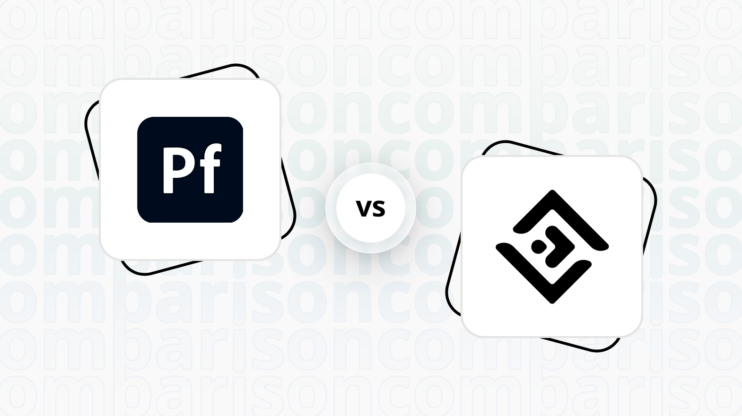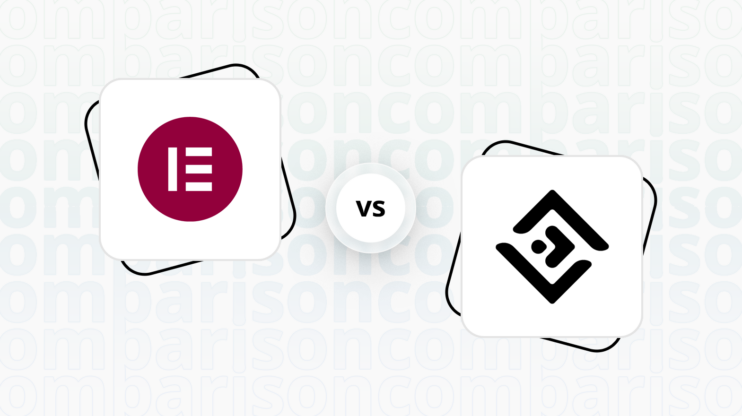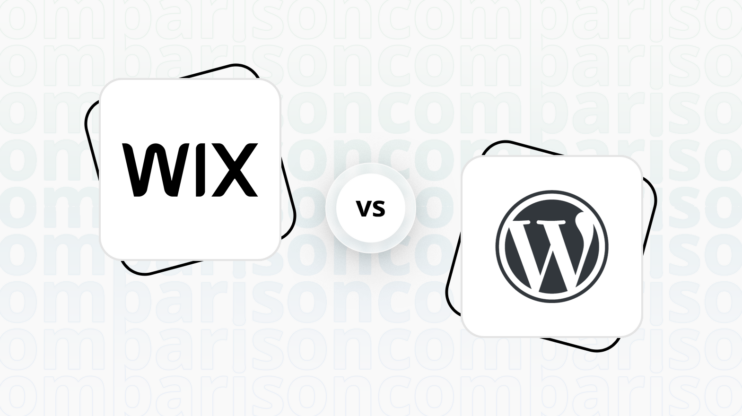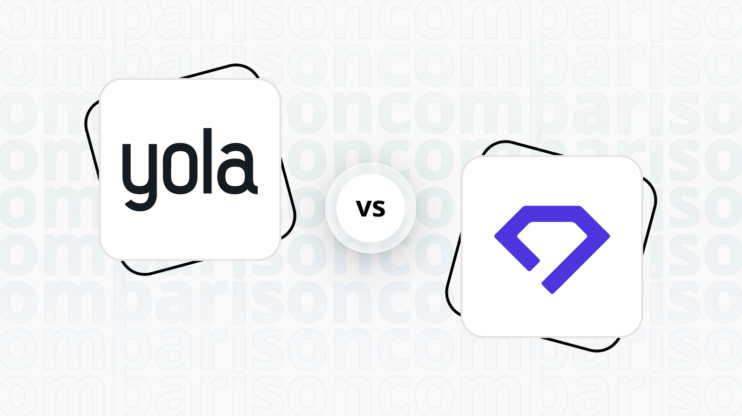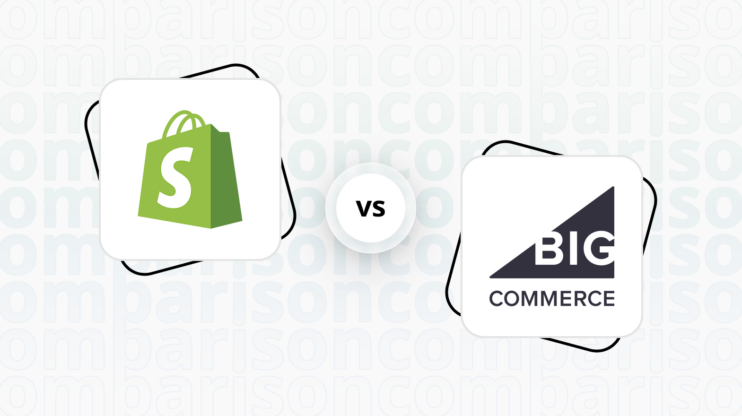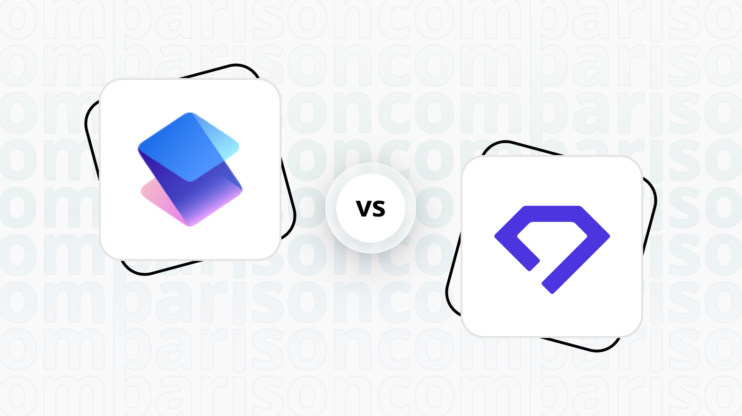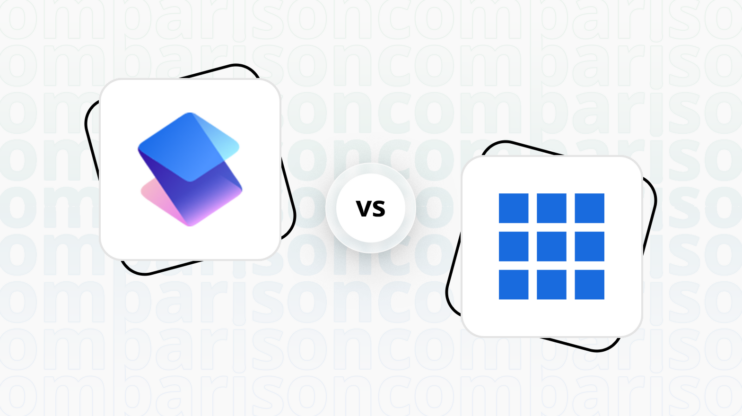Final verdict
When comparing Adobe Portfolio and Elementor, it’s clear that each platform serves its audience with distinct strengths.
-
Adobe Portfolio (Overall Grade: 5.5/10)
is tailored for creative professionals seeking to showcase their work. It excels in providing a straightforward, visually appealing platform that integrates seamlessly with Adobe Creative Cloud, making it ideal for photographers, graphic designers, and artists. However, its limitations become apparent in ecommerce capabilities, customization flexibility, and advanced features, which are essential for a broader range of web development needs. -
Elementor (Overall Grade: 7.4/10)
stands out as a versatile website builder that caters to a wide audience, from beginners to professional web designers. Its strength lies in its extensive customization options, robust ecommerce solutions through WooCommerce integration, and a wide array of plugins and integrations. Elementor is suitable for those who require a more comprehensive and flexible web development tool, especially for WordPress users.
Given these considerations, Elementor emerges as the more versatile and feature-rich option, making it the preferred choice for users seeking extensive customization capabilities and ecommerce functionality. Adobe Portfolio remains a strong contender for creatives focused solely on portfolio presentation.

|

|
|
|---|---|---|
|
Design functionalities & templates |
7.4 |
9.2 |
|
Ease of use |
8.7 |
8.8 |
|
Ecommerce |
0.0 |
7.6 |
|
Website Editors |
7.4 |
8.5 |
|
Product testing options |
7.6 |
5.6 |
|
Price |
7.7 |
8.0 |
|
Hosting quality |
7.0 |
7.8 |
|
Website speed optimization |
6.2 |
6.7 |
|
Plugins and integrations |
6.7 |
7.6 |
|
Marketing features |
3.7 |
7.8 |
|
Customer support |
7.3 |
7.2 |
|
Security |
8.1 |
9.1 |
|
AI capabilities |
0 |
7.4 |
|
User Management |
3.0 |
8.8 |
| Overall |
5.5 |
7.4 |
Best for ecommerce
 0.0
0.0
 7.6
7.6
Verdict
: For users looking to build an online store, Elementor is the clear choice over Adobe Portfolio, offering comprehensive ecommerce capabilities.
-
Adobe Portfolio
: It is primarily designed for creatives to showcase their work, lacking any ecommerce features. This makes it unsuitable for users aiming to sell products or services online. -
Elementor
: Boasts extensive ecommerce functionalities through its integration with WooCommerce. It supports customizable product pages, a variety of ecommerce-specific widgets, and responsive design templates, making it ideal for creating sophisticated online stores.
Best for informational & business websites
 7.4
7.4
 8.9
8.9
Verdict
: Elementor is the superior choice for informational and business websites, offering greater flexibility, customization options, and a higher overall score for this category.
-
Adobe Portfolio
: Adobe Portfolio, with a score of 7.4, is a specialized platform best suited for creatives looking to showcase their work. While it offers beautiful, responsive templates and seamless Adobe Creative Cloud integration, its focus on portfolio sites means it might not be the best fit for more traditional informational or business websites. -
Elementor
: Scoring 8.9, Elementor stands out for its versatility and ease of use, making it ideal for creating a wide range of websites, including informational and business sites. With its extensive library of widgets and templates, Elementor provides users with the tools needed to create highly customized and professional-looking websites.
Detailed comparison
Design functionalities & templates
Design FunctionalitiesRepresents how well each platform allows for creative design and customization of websites.Score Components:
- Template Variety (30%): Range and quality of design templates.
- Customization (30%): Flexibility and options for design alterations.
- User Interface (20%): Ease and intuitiveness of the design process.
- Responsiveness (10%): Adaptability to different devices and screen sizes.
- Innovation (10%): Unique design features and tools.
 7.4
7.4
 9.2
9.2
🏆
Winner: Elementor.
Elementor offers a wider range of templates and designs, more customization flexibility, and more creative design possibilities compared to Adobe Portfolio.
Adobe Portfolio offers a selection of customizable templates designed for creatives across various fields. These templates are responsive and tailored to showcase creative work effectively across all devices. Adobe Portfolio provides a flexible foundation for users to personalize and present their projects in a polished manner.
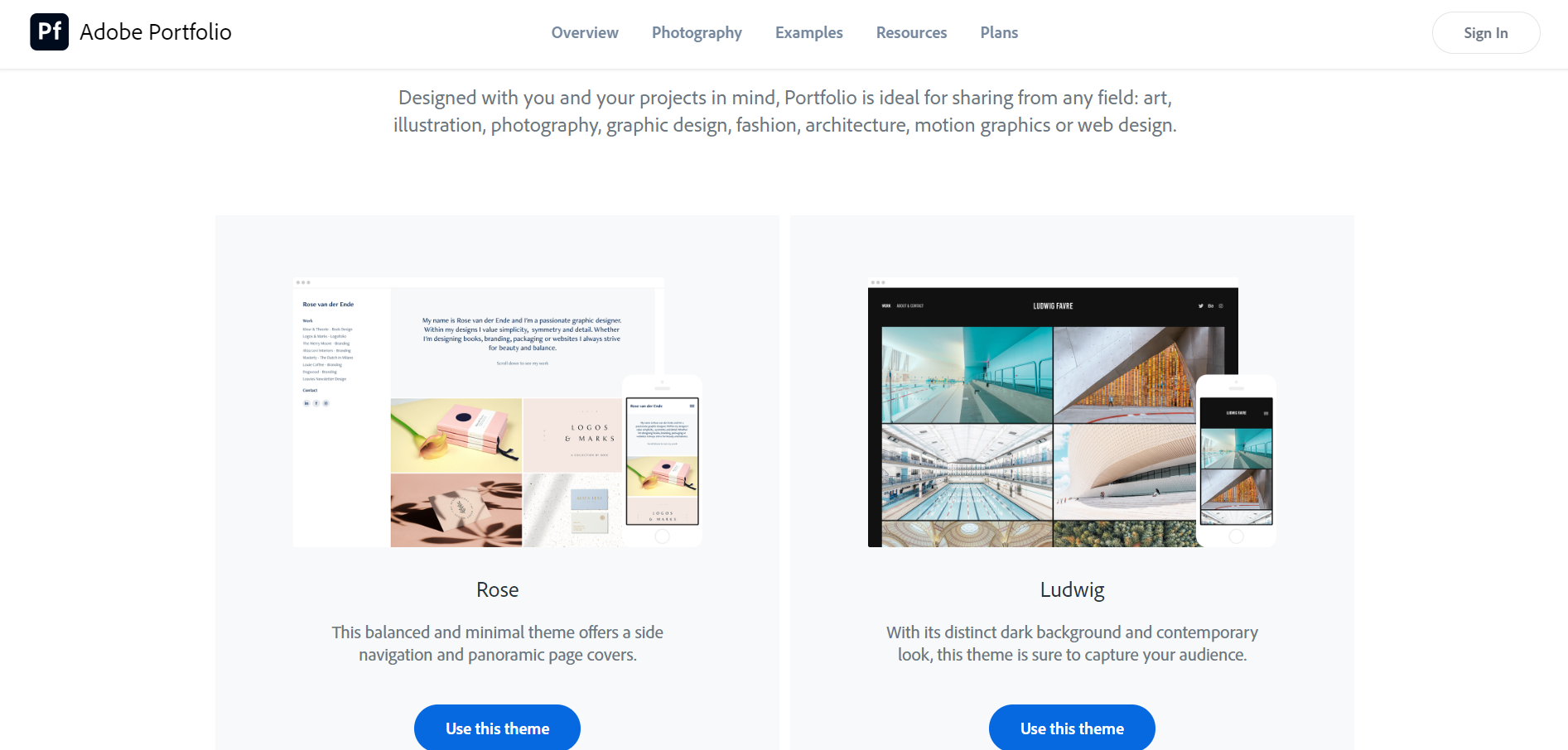
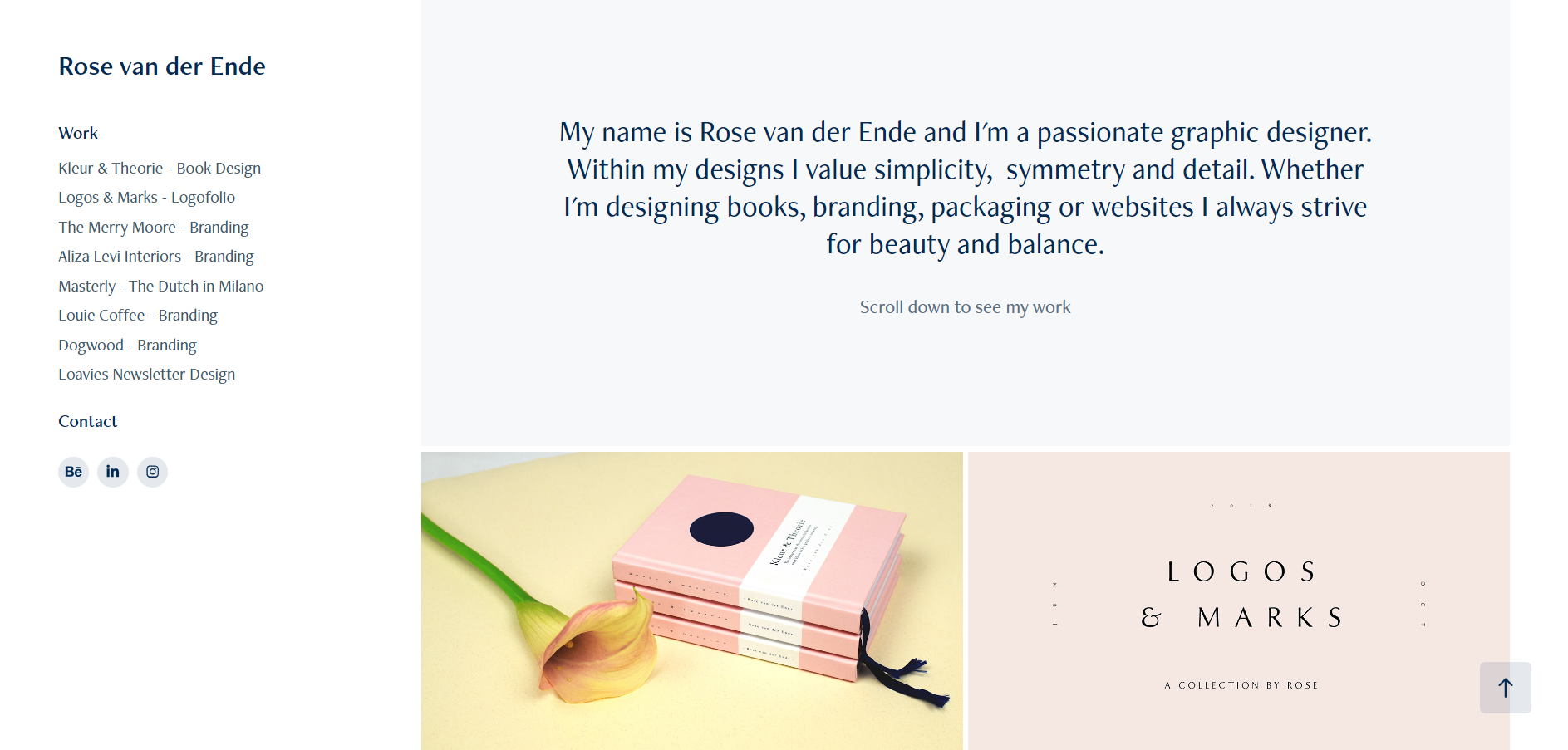
On the other hand, Elementor offers an extensive range of templates and designs, with over 100 responsive website kits covering various categories. Additional sources like Envato Elements, Template Monster, and others provide a wider selection, including free and premium options, catering to diverse web design needs. These templates are designed to be user-friendly, facilitating easy customization and quick website development across different sectors.
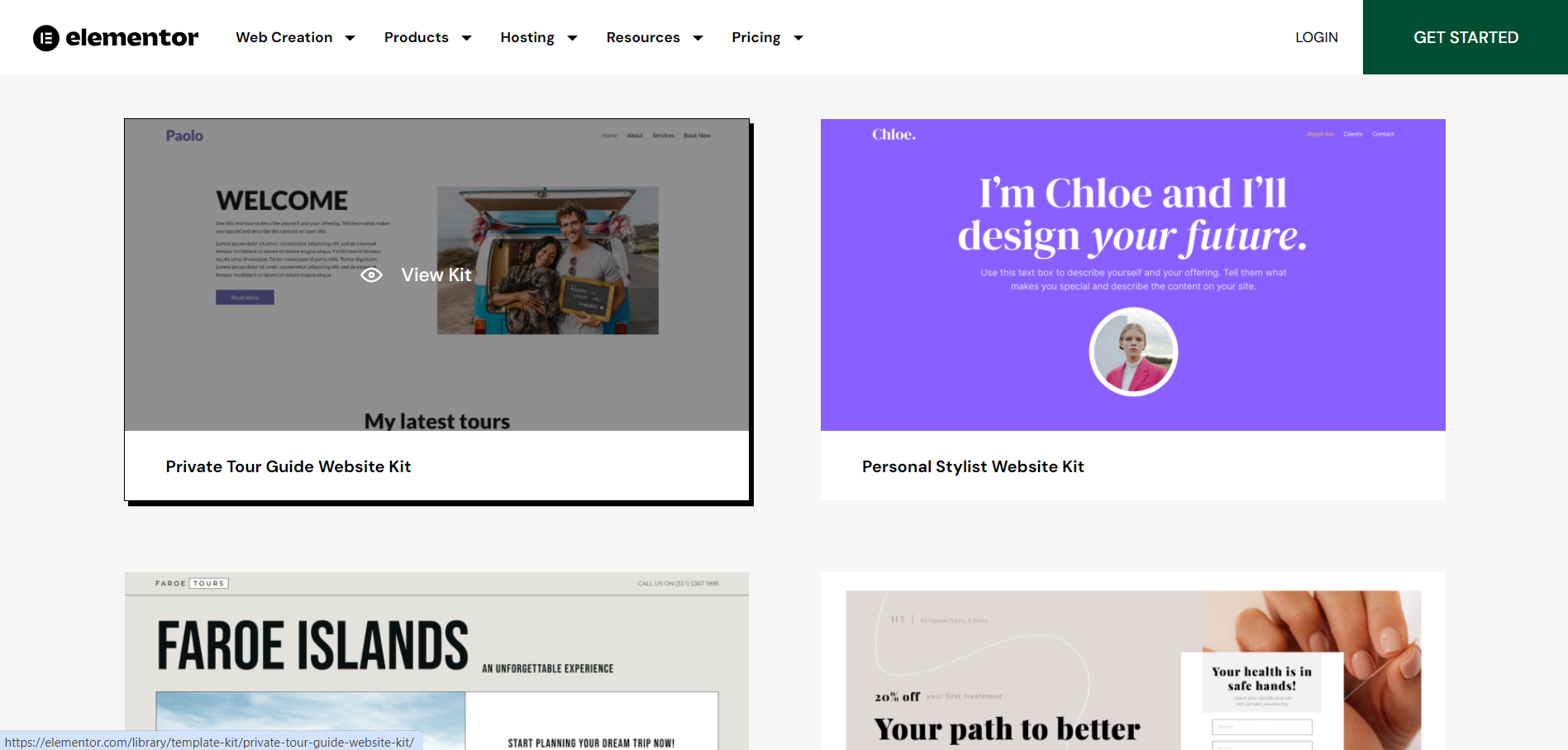
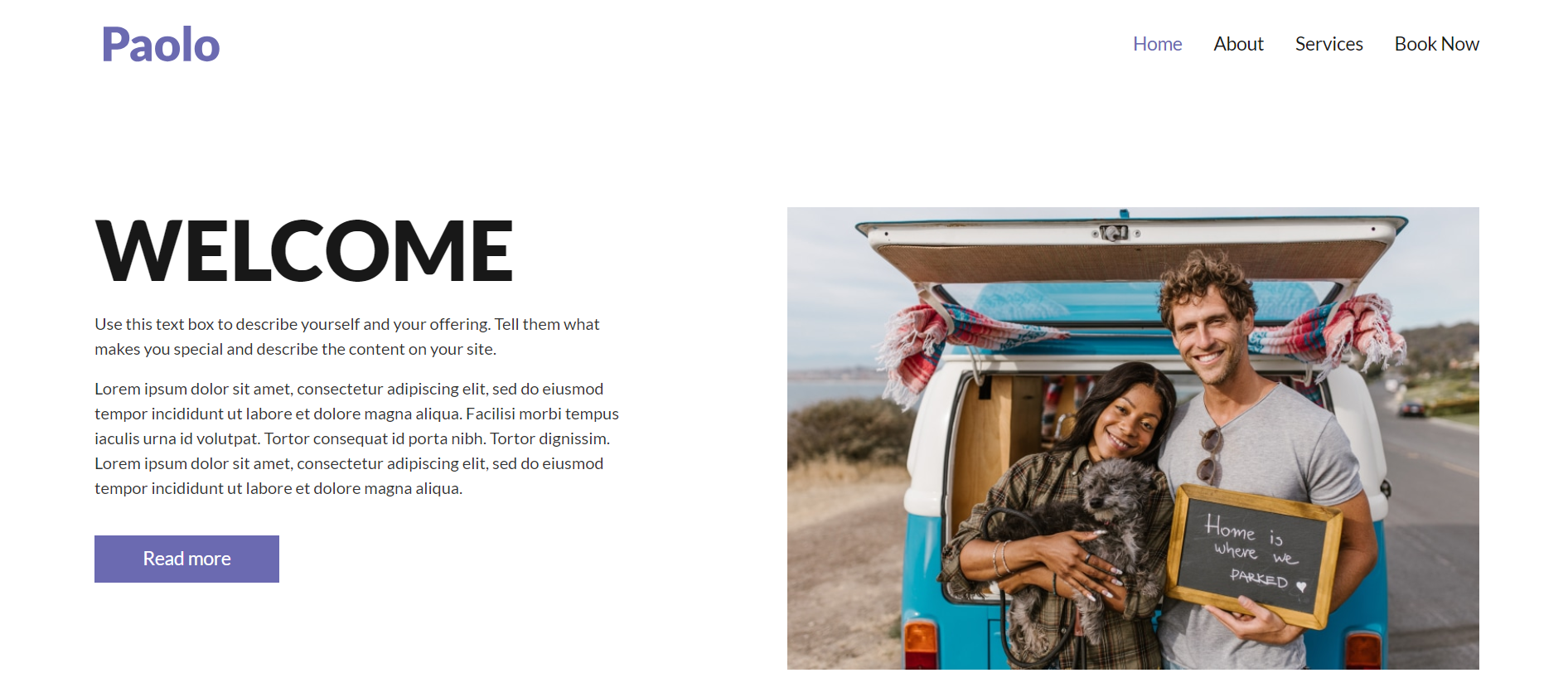
Get a head start on website creation with AI
Create a custom website tailored to your business needs 10X faster with 10Web AI Website Builder!
Ease of use
Ease of useReflects the platform’s overall user-friendliness.Score
Components:
- Learning curve (40%): Quickness and ease of getting started.
- Interface design (30%): Simplicity and intuitiveness of layout.
- User guidance (20%): Quality of tutorials and support.
- Flexibility (10%): Adaptability to various user skills.
 8.7
8.7
 8.8
8.8
🏆 Winner: Elementor
. With a score of 8.8, Elementor slightly edges out Adobe Portfolio (8.7) in terms of ease of use. Elementor’s user-friendly interface, drag-and-drop functionality, and wide range of pre-designed templates make it a flexible and intuitive platform for building websites. Adobe Portfolio, while also user-friendly and efficient, is more specialized and best suited for creative professionals and visual artists.
Learning Resources
🏆 Winner: Elementor
. Both platforms offer extensive learning resources, but Elementor goes a step further with its Elementor Academy and numerous free resources such as blogs, eBooks, and YouTube channels. Adobe Portfolio also provides detailed tutorials and articles, but Elementor’s resources are more comprehensive and cover a wider range of topics.
For ecommerce
EcommerceMeasures the platform’s effectiveness in supporting online business activities.Score Components:
- Ecommerce themes and templates (20%): Variety and design of templates.
- Product management (25%): Ease of managing and organizing products.
- Payment options (25%): Variety and convenience of payment methods.
- Ecommerce features (20%): Features for managing an ecommerce store.
- Integration (10%): Compatibility with external e-commerce tools and services.
 0.0
0.0
 7.6
7.6
Adobe Portfolio is not designed for ecommerce, as it lacks the necessary features and capabilities. It is primarily a platform for creative professionals to showcase their work, not to sell products or services online.
On the other hand, Elementor offers robust ecommerce capabilities through its seamless integration with WooCommerce. This includes customizable product pages, a variety of ecommerce-specific widgets, and responsive design templates for building online stores.

|

|
|
|---|---|---|
|
Ecommerce themes and templates |
0.0 |
7.8 |
|
Product page customization |
0.0 |
8.4 |
|
Payment processing and commissions |
0.0 |
7.5 |
|
POS capabilities |
0.0 |
5.5 |
|
Payment gateways |
0.0 |
7.0 |
|
Product numbers |
0.0 |
7.0 |
|
Additional ecommerce features |
0.0 |
8.0 |
Elementor ecommerce features:
- WooCommerce Integration
- Customizable Product Pages
- Ecommerce Widgets
- Product Categories and Filters
- Shopping Cart Customization
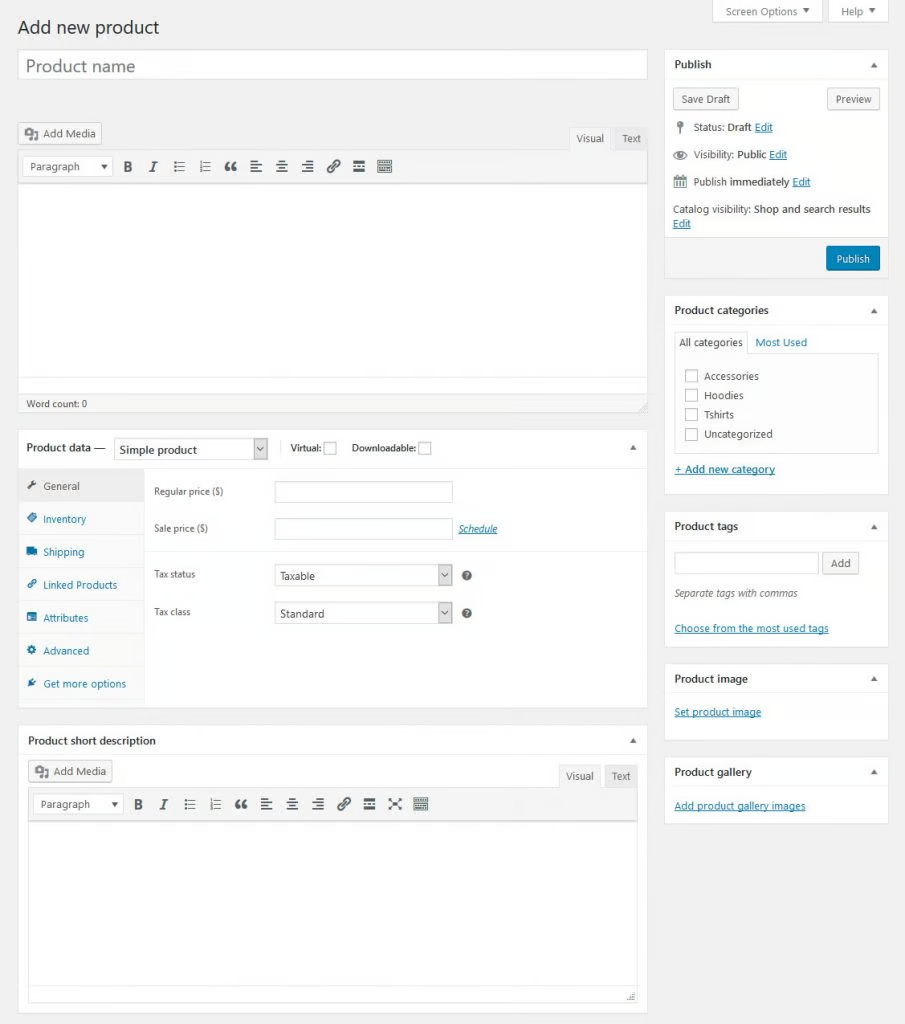
Elementor offers a diverse range of ecommerce-specific templates suitable for various online stores. These templates are designed to be mobile-responsive and SEO-friendly, ensuring optimal performance across devices and search engines.
Elementor offers extensive customization options for WooCommerce product pages, including custom layouts, WooCommerce widgets for various product elements, and options for styling product galleries and ‘Add to Cart’ buttons.
Elementor supports several payment gateways, notably through plugins and integrations, with Stripe and PayPal being prominent options for simple and widespread use. These gateways charge their own transaction fees, typically around 2.9% + $0.30 per transaction, but Elementor itself does not impose additional fees for transactions.
While Adobe Portfolio is a great platform for showcasing creative work, it falls short when it comes to ecommerce. Elementor, with its robust ecommerce capabilities, is a more suitable choice for those looking to build an online store.
Website Editors
Website EditorsEvaluates the platforms’ website building and editing capabilities.Score Components:
- Customization tools (40%): Range and power of editing features.
- Editor usability (30%): User experience within the editor.
- Design flexibility (20%): Freedom in layout and design changes.
- Update and maintenance ease (10%): Simplicity of updating and maintaining the site.
 7.4
7.4
 8.5
8.5
🏆
Winner: Elementor
. Elementor, with a score of 8.5, offers a drag-and-drop interface that makes it easy to customize layouts, add content, and style websites visually in real-time. With a wide array of widgets and templates, users can effortlessly design complex elements such as sliders, forms, and animated headlines. Additionally, Elementor provides responsive design options, ensuring websites look great on all devices, alongside advanced features like custom CSS, role-based access control, and integration with a variety of marketing tools.
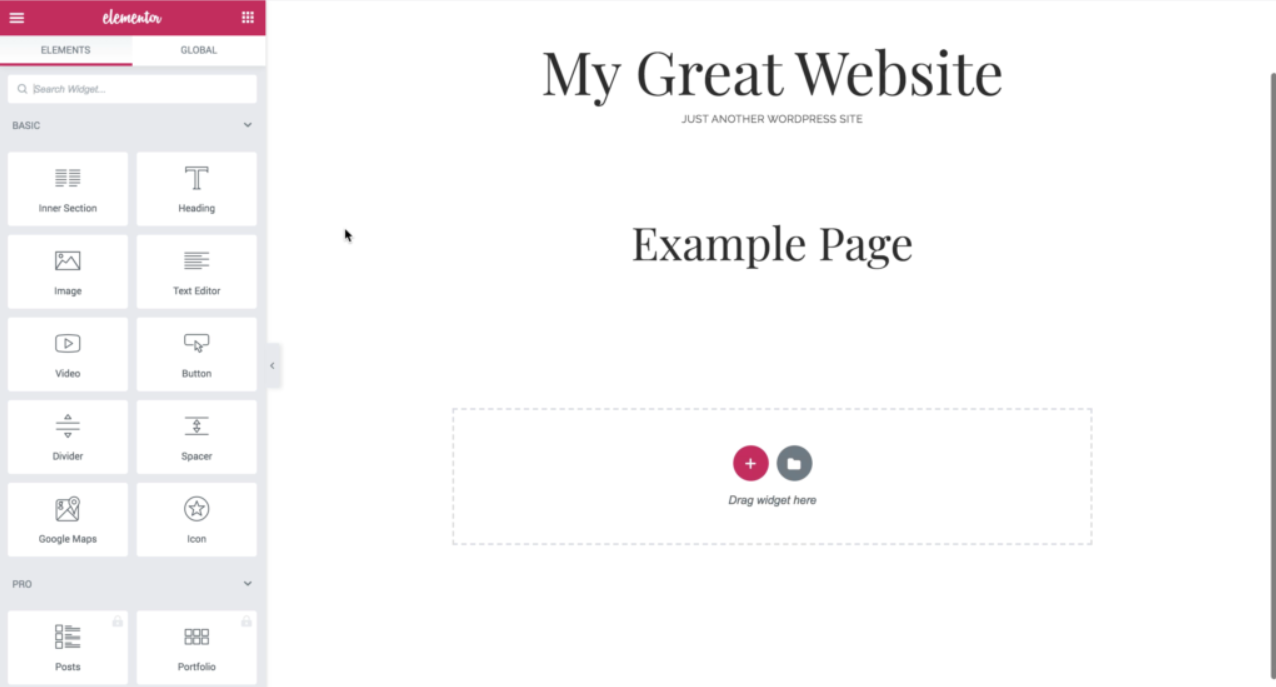
Adobe Portfolio’s editor, scoring 7.4, is designed for creatives to showcase their work. With it, users can easily create and customize their own professional-looking websites without needing to code. The editor allows for the integration of high-quality images and videos, offers a variety of responsive templates tailored to different creative fields, and provides seamless Adobe Creative Cloud integration, enabling users to directly import their work. Additionally, Adobe Portfolio supports custom domain names and offers access to Adobe Fonts, enhancing the aesthetic appeal and functionality of the user’s website.
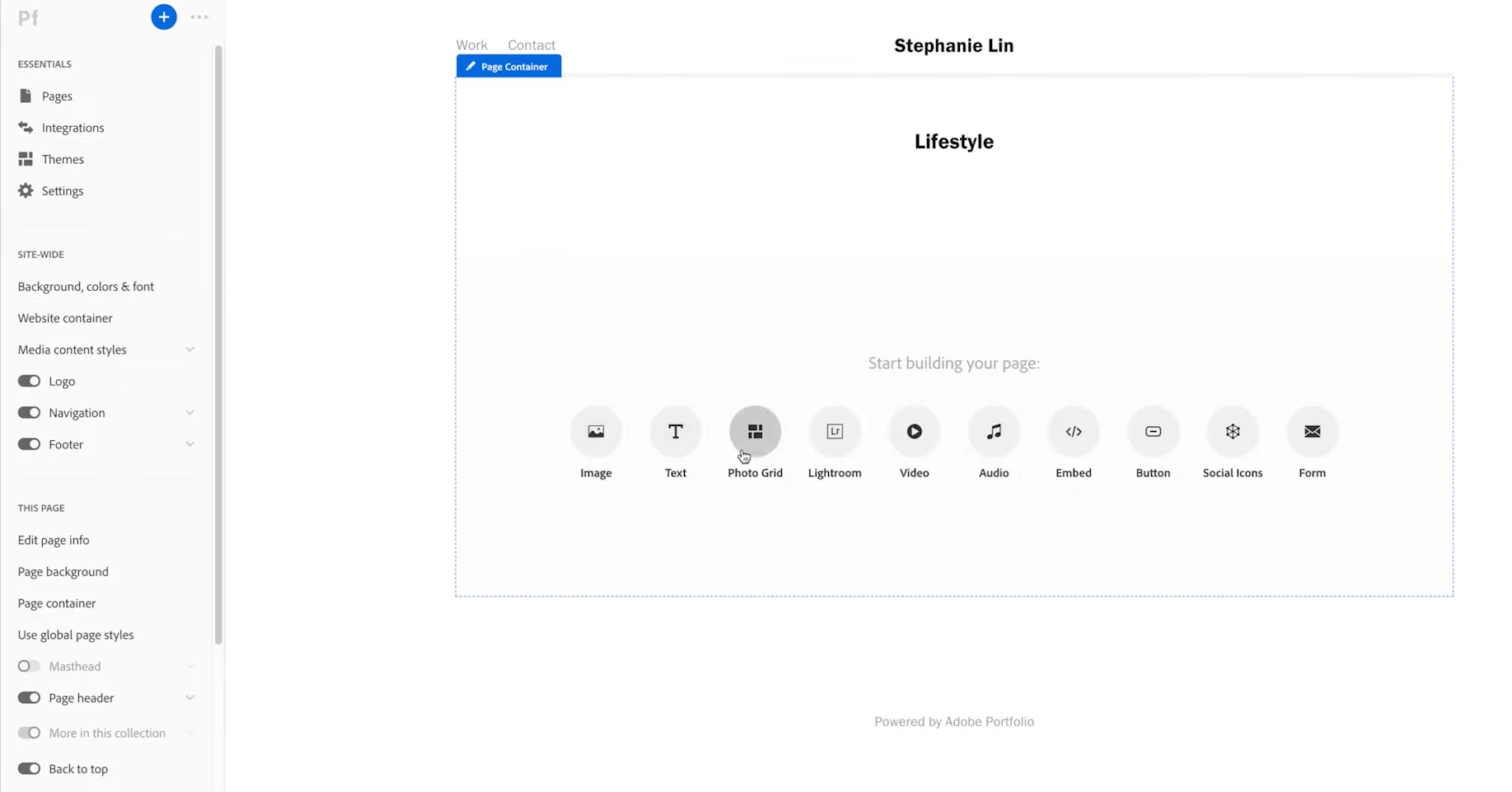
Mobile editor/app
 0
0
 0
0
🏆
No Winner
. Neither Adobe Portfolio nor Elementor offer a dedicated mobile editor or app for editing websites. This means that users will need to use a desktop or laptop computer to make changes to their websites. While both platforms are responsive and ensure that websites look good on mobile devices, the lack of a mobile editor may be a drawback for users who prefer to make changes on the go.
Product testing options
Product Testing OptionsAssesses the options for trying out platform features before commitment.Score Components:
- Trial quality (40%): Extent and usefulness of the trial or free version.
- Feature accessibility (30%): How many features are available to test.
- Trial duration (20%): Length of the trial period.
- Ease of transition (10%): Smoothness of moving from trial to paid plans.
 7.6
7.6
 5.6
5.6
Overall Result
:
Adobe Portfolio wins
. Adobe Portfolio scores 7.6, offering a trial version and a 14-day money-back guarantee, while Elementor scores 5.6, offering a free version but no trial version. Both platforms allow testing of premium features, with Elementor offering a longer money-back guarantee period.

|

|
|
|---|---|---|
|
Free Plan |
No | Yes, but only for self-hosted WordPress.org |
|
Trial Duration |
Yes | No |
|
Testing Premium Features |
Yes, during trial and refundable period | Yes, during refundable period |
|
Money Back Guarantee |
14-day money back guarantee | 30-day money back guarantee |
Price
PriceLooks at the cost-effectiveness and value for money of each platform.Score Components:
- Plan value (40%): What each pricing tier offers.
- Transparency and clarity (30%): Clearness of pricing structures.
- Flexibility of plans (20%): Range of options to suit different budgets.
- Hidden costs (10%): Additional expenses not included in the plan.
 7.7
7.7
 8.0
8.0
Adobe Portfolio and Elementor have similar pricing structures, but Elementor offers more flexibility with its plans.

|

|
|
|---|---|---|
|
$0-$10 |
Creative Cloud – Photography ($9.99/month): Up to 5 Portfolio sites with fonts from Adobe Fonts, and with access to Photoshop and Lightroom and 20GB storage. Value for price: 7.0 |
Basic ($9.99/month): 1 website, with 10GB SSD storage, 25k monthly visitors, 30GB monthly bandwidth, daily auto backups stored for 14 days, Cloudflare CDN, and integrated caching tool Value for price: 6.5 |
|
$10-$20 |
No offering at this amount. |
Business ($19.99/month): 1 website, with 20GB SSD storage, 50k monthly visitors, 50GB monthly bandwidth, daily auto backups stored for 30 days, Cloudflare CDN, integrated caching tool and access to staging environment Value for price: 7.5 |
|
$20-$30 |
No offering at this amount. |
Grow ($22.99/month): 3 websites, with 30GB SSD storage, 75k monthly visitors, 75GB monthly bandwidth, daily auto backups stored for 30 days, Cloudflare CDN, integrated caching tool, access to staging environment and site cloning Value for price: 8.5 |
|
$40+ |
Creative Cloud – All Apps ($59.99/month): Up to 5 Portfolio sites with the entire collection of Adobe creative apps, including Photoshop, Illustrator and InDesign, with 20 GB storage. Value for price: 8.5 |
Scale ($49.99/month): 10 websites, with 40GB SSD storage, 100k monthly visitors, 100GB monthly bandwidth, daily auto backups stored for 30 days, Cloudflare CDN, integrated caching tool, access to staging environment and site cloning Value for Price: 9.0 |
location. As a result in rare cases the prices displayed here can differ from the ones you see on their
websites.
Hosting quality
Hosting
qualityExamines the reliability and performance of the hosting solutions.Score Components:
- Uptime (40%): Consistency and reliability of website availability.
- Speed (30%): Loading times and performance.
- Bandwidth and storage (20%): Sufficiency of resources provided.
- Data centers (10%): Quality and distribution of hosting infrastructure.
 7.0
7.0
 7.8
7.8
🏆
Winner: Elementor
Elementor edges out Adobe Portfolio with a slightly higher hosting quality score. Elementor offers managed WordPress hosting powered by Google Cloud, with a 99.9% uptime guarantee. Adobe Portfolio, while offering cloud hosting and three global data centers, does not publish its uptime statistics or provide an uptime guarantee.

|

|
|
|---|---|---|
|
Do they offer hosting? |
Yes, included in all paid plans |
Yes, included in all paid plans |
|
Data Centers: |
3 globally: US, Ireland and Japan |
1 data center in Belgium |
|
Type of hosting: |
Cloud Hosting |
Managed WordPress Hosting |
|
Uptime: |
Not published |
99.9% |
|
Uptime Guarantee: |
No |
Yes, 99.9% |
Website Speed Optimization
Website Speed OptimizationEvaluates optimization of website loading timesScore Components:
- PageSpeed Score (30%): Google’s score indicating performance optimization.
- Loading Time (30%): The average time until a website is fully interactive.
- Mobile Optimization (15%): Optimization effectiveness for mobile devices.
- Resource Optimization (15%): Optimizing images, scripts, and other heavy resources.
- CDN Usage (10%): Use of CDN to enhance speed across geolocations.
 6.2
6.2
 6.7
6.7
🏆 Winner: Elementor
Both Adobe Portfolio and Elementor prioritize website performance and speed, but Elementor’s strategies for speed optimization give it a slight edge.

|

|
|
|---|---|---|
|
Focus |
Image optimization, SEO and Meta Tag Configurations |
Lazy Loading, Code Minification, Caching, CDN |
|
Performance Tools |
Adobe Creative Cloud, Google PageSpeed Insights |
Google PageSpeed Insights, WordPress plugins |
|
Key Strategies |
Image optimization, SEO and Meta Tag Configurations |
Lazy Loading, Code Minification, Caching, CDN |
|
Load Times |
Varies depending on design choices and content volume |
Varies depending on optimization and website complexity |
|
Page Speed Scores Range |
Not disclosed |
Not disclosed |
|
Core Web Vitals Improvement |
Not disclosed |
Not disclosed |
Elementor, a popular website builder plugin for WordPress, allows users to create and edit websites through a visual drag-and-drop interface. It offers a wide range of widgets and templates, enabling users to design their sites without needing to write code. Elementor’s strategies for speed optimization include lazy loading, code minification, caching, and CDN, which give it an edge over Adobe Portfolio in terms of website speed optimization.
Adobe Portfolio, on the other hand, is a website builder specifically designed for creative professionals to showcase their work. It allows users to create fully responsive, visually appealing websites without the need for coding knowledge. Adobe Portfolio’s strategies for speed optimization include image optimization and SEO and Meta Tag Configurations. However, its load times and PageSpeed scores vary depending on specific design choices and content volume. Adobe Portfolio does not disclose any information about its Core Web vitals improvements.
Get a head start on website creation with AI
Create a custom website tailored to your business needs 10X faster with 10Web AI Website Builder!
Plugins and integrations
Plugins and integrationsMeasures the range and effectiveness of additional plugins and integrations.Score Components:
- Variety of options (40%): Range of available add-ons.
- Integration smoothness (30%): Ease of integrating plugins into the site.
- Quality of plugins (20%): Functionality and reliability of the options.
- Custom integration capabilities (10%): Support for custom or third-party integrations.
 6.7
6.7
 7.6
7.6
🏆 Winner: Elementor.
Elementor, with a score of 7.6, offers a wide range of both free and premium add-ons that extend its functionality beyond the base version. These add-ons offer advanced widgets, modules, and complete theme building capabilities for deep customization. They enable superior integration with WooCommerce, third-party services, and provide advanced marketing tools to enhance conversions and user engagement.
On the other hand, Adobe Portfolio, scoring 6.7, integrates with several Adobe services like Behance, Adobe Lightroom, Adobe Stock, and Adobe Fonts to enhance user experience by allowing seamless sharing, updating, and showcasing of creative work. These integrations are designed to be user-friendly and aim to provide additional customization and management options for online portfolios. The services are included with Adobe Portfolio, which is available at no extra cost to Creative Cloud subscribers.
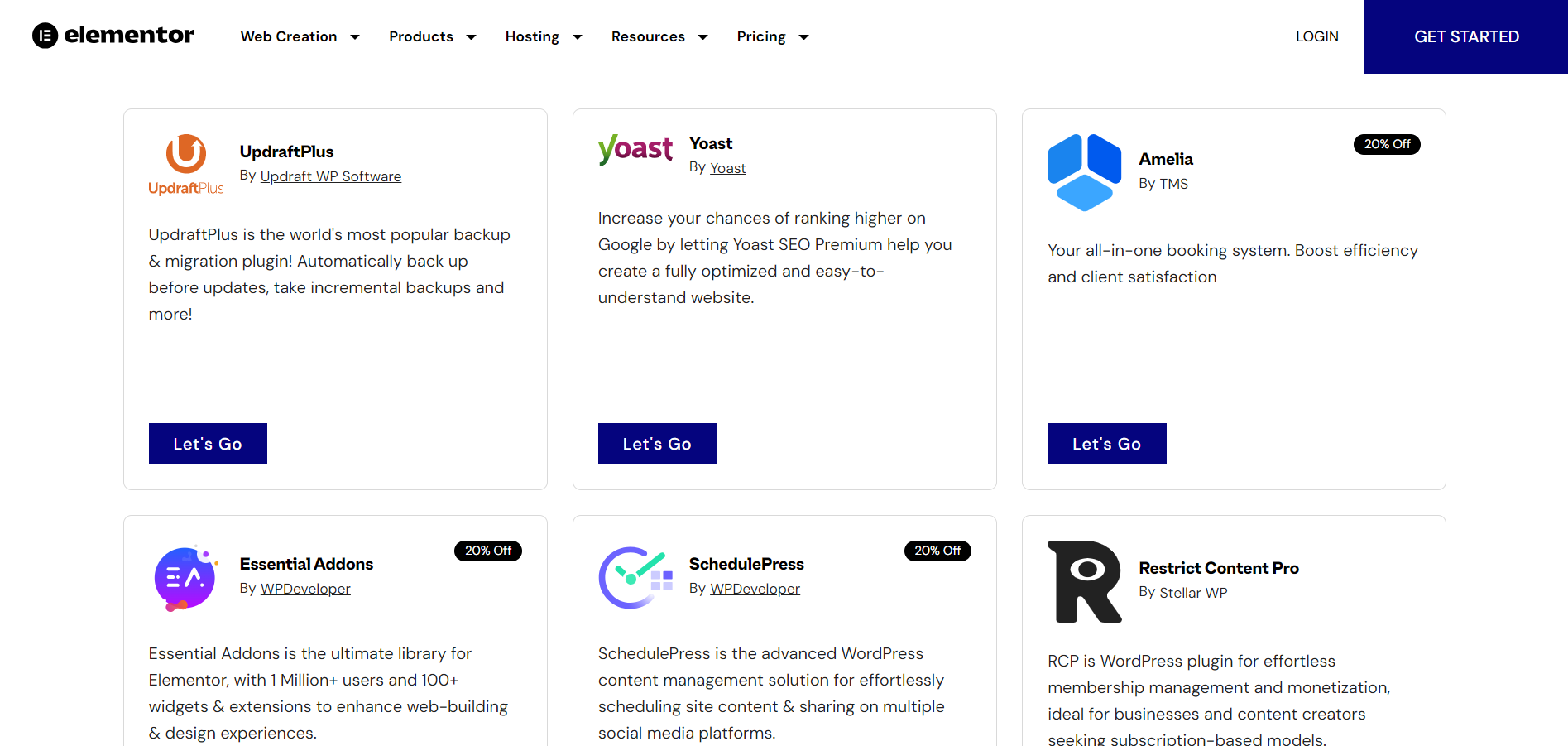
Marketing Features
Design FunctionalitiesRepresents how well each platform allows for creative design and customization of websites.Score Components:
- Template Variety (30%): Range and quality of design templates.
- Customization (30%): Flexibility and options for design alterations.
- User Interface (20%): Ease and intuitiveness of the design process.
- Responsiveness (10%): Adaptability to different devices and screen sizes.
- Innovation (10%): Unique design features and tools.
 3.7
3.7
 7.8
7.8
🏆
Overall Winner: Elementor
. Elementor stands out for its advanced marketing tools, especially in email marketing, blogging, and ads and promotions. Adobe Portfolio offers basic marketing features, but lacks in email marketing, blogging, and ads and promotions.

|

|
|
|---|---|---|
|
SEO Tools |
|
|
|
Email Marketing |
|
|
|
Blogging |
|
|
|
Social Media Integration |
Limited integration |
Advanced integration for various platforms |
|
Analytics and Reporting |
Integration with Google Analytics |
Integration with Google Analytics and other tools |
|
Ads and Promotions |
|
|
Customer Support
Customer supportEvaluates the quality and availability of support options.Score Components:
- Response time (40%): Speed of support responses.
- Support quality (30%): Effectiveness and helpfulness of the support.
- Availability (20%): Range of support channels (phone, chat, email).
- Resource richness (10%): Quality of self-help and educational materials.
 7.3
7.3
 7.2
7.2
🏆 Winner: Adobe Portfolio
. Adobe Portfolio edges out Elementor in this category with a customer support score of 7.3 compared to Elementor’s 7.2. Adobe Portfolio offers a comprehensive Knowledgebase and FAQ for self-service help, alongside general support for all Adobe products which might assist with Portfolio-related queries. Additionally, Adobe offers live chat and phone support. The emphasis is more on self-service help, but they also offer advanced 24/7 tech support on their enterprise plans.
Elementor, on the other hand, provides customer support with their Customer Experience agents located around the globe to ensure 24/7 availability. They offer support via ticketing and 24/7 live chat support. However, Elementor does not have customer support for enterprises.
Security
SecurityLooks at the platforms’ security measures and data protection.Score Components:
- Data protection (40%): Safeguards for user and customer data.
- SSL and encryption (30%): Implementation of secure connections.
- Compliance (20%): Adherence to industry security standards.
- Regular updates (10%): Frequency of security updates and patches.
 8.1
8.1
 9.1
9.1
🏆
Winner: Elementor
. Elementor’s security measures are robust and comprehensive, leveraging Google Cloud’s infrastructure for high security, including end-to-end encryption. They offer advanced hosting features, including the use of Google Cloud Platform’s C2 servers and integration with Cloudflare’s Enterprise CDN, to deliver fast loading times and global reach. Elementor employs both active and passive security measures, including 24/7 monitoring, regular updates, backups, and specialized security protocols to protect against common threats. Their commitment to security is further emphasized by their ISO 27001 certification and a proactive Bug Bounty program.
Adobe Portfolio also prioritizes the security and privacy of user and customer data, implementing comprehensive data protection measures aligned with major regulatory frameworks like the GDPR and U.S. state privacy laws. They offer basic security measures, such as SSL certificates, and users can password protect their entire website or some pages of the website. However, compared to Elementor, Adobe Portfolio’s security measures are not as extensive.
AI Capabilities
AI capabilitiesMeasures the effectiveness of AI-driven features and tools.Score Components:
- Automation efficiency (40%): Impact of AI on streamlining processes.
- Personalization (30%): AI-driven customization for users or customers.
- AI-Assisted design (20%): Role of AI in website design and functionality.
- Data analysis (10%): Use of AI in interpreting user data and analytics.
 0
0
 7.4
7.4

|

|
|
|---|---|---|
|
AI Builder |
|
Elementor’s AI builder generates text, custom codes, and images |
|
AI Ecommerce features |
|
AI-driven features for eCommerce websites |
|
AI Content Generation |
|
AI capabilities for text and code generation |
|
Additional AI features |
|
Integration of third-party AI-powered WordPress plugins |
🏆 Winner: Elementor
. Elementor, with a score of 7.4, offers a range of AI capabilities including an AI builder, AI-driven eCommerce features, AI content generation, and the ability to integrate third-party AI-powered WordPress plugins or widgets. These features enhance the efficiency and creativity of the website creation process.
Adobe Portfolio, on the other hand, does not have any AI capabilities. This lack of AI features may limit the automation and customization options available to users.
User Management
User ManagementAssesses the platforms’ capabilities in managing user roles, permissions, and accessibility.Score Components:
- Role Customization (40%): Flexibility in creating and defining user roles and
permissions. - Ease of Management (30%): User interface and tools for managing users.
- Access Control (20%): Effectiveness of access control measures for different user
levels. - Scalability (10%): Ability to manage a growing number of users efficiently.
 3.0
3.0
 8.8
8.8
🏆 Winner: Elementor
. Adobe Portfolio and Elementor have different approaches to user management.
- Adobe Portfolio allows only one user to build and edit a website.
- The number of users who can edit or manage a website built with Elementor depends on the roles and permissions set within WordPress, as Elementor operates on WordPress. Administrators have full access to edit any part of the site, including Elementor settings, while Editors can manage posts and pages made with Elementor. Authors and Contributors have limited capabilities, with the former being able to manage their own posts. Elementor Pro offers a Role Manager feature, enabling further customization of what different roles can do within Elementor, but there’s no fixed limit on the number of users—it’s determined by the roles assigned by the site administrator.
Elementor User Roles and Access Levels:
| Role | Description | Access Highlights |
|---|---|---|
| Administrator | Users with full access to all administration features, including Elementor settings. | Can edit all content, Access to Elementor settings, Can install plugins and themes, Can manage users |
| Editor | Users who can manage and publish content including pages and posts. | Can edit pages/posts created with Elementor, Cannot access Elementor settings, Can manage categories, tags, and links, Can moderate comments |
| Author | Users who can publish and manage their own posts. | Can create posts with Elementor, Cannot edit pages, Limited access to media library, Cannot access Elementor settings |
| Contributor | Users who can write and manage their own posts but cannot publish them. | Can create content with Elementor, Cannot publish or edit pages, No access to Elementor settings, Submissions require review by higher-level roles |
Additional Features

|

|
|
|---|---|---|
|
SSL Certificate |
|
|
|
Custom Domain |
|
|
|
Free Custom Domain Included |
|
|
|
International Domains |
|
|
|
Mobile Responsive |
|
|
|
Page Speed |
|
|
|
Website Builder Mobile App |
|
|
|
Convert a Website To An App |
|
|
|
Website Analytics |
|
|
|
Multilingual Sites |
|
|
|
Multiple Users |
|
|
User Feedback
Elementor is widely appreciated for its intuitive drag-and-drop interface, enabling rapid creation of professional and responsive websites without coding skills. It offers a vast range of templates and compatibility with WordPress, making it a go-to for diverse users. Despite its benefits, concerns arise regarding website loading times, subscription costs, and occasional compatibility issues. Feedback on customer support and legacy plan management is mixed, with some users experiencing dissatisfaction. Overall, Elementor is valued for its efficiency in web development, although some aspects, particularly support services, could be improved.
Unfortunately, there is no user feedback available for Adobe Portfolio at this time.
The making of this blog
We followed a clear, step-by-step process to write and research this article.
FAQ
Which platform is better for creative professionals, Adobe Portfolio or Elementor?
Can I use Elementor to build an online store?
Is Adobe Portfolio suitable for building an ecommerce website?
Which platform offers better customization and design flexibility?
How do Adobe Portfolio and Elementor compare in terms of ease of use?
Which platform is better for someone with no coding knowledge?
Can I integrate Adobe Portfolio with other Adobe Creative Cloud apps?
What kind of support can I expect from Adobe Portfolio and Elementor?










